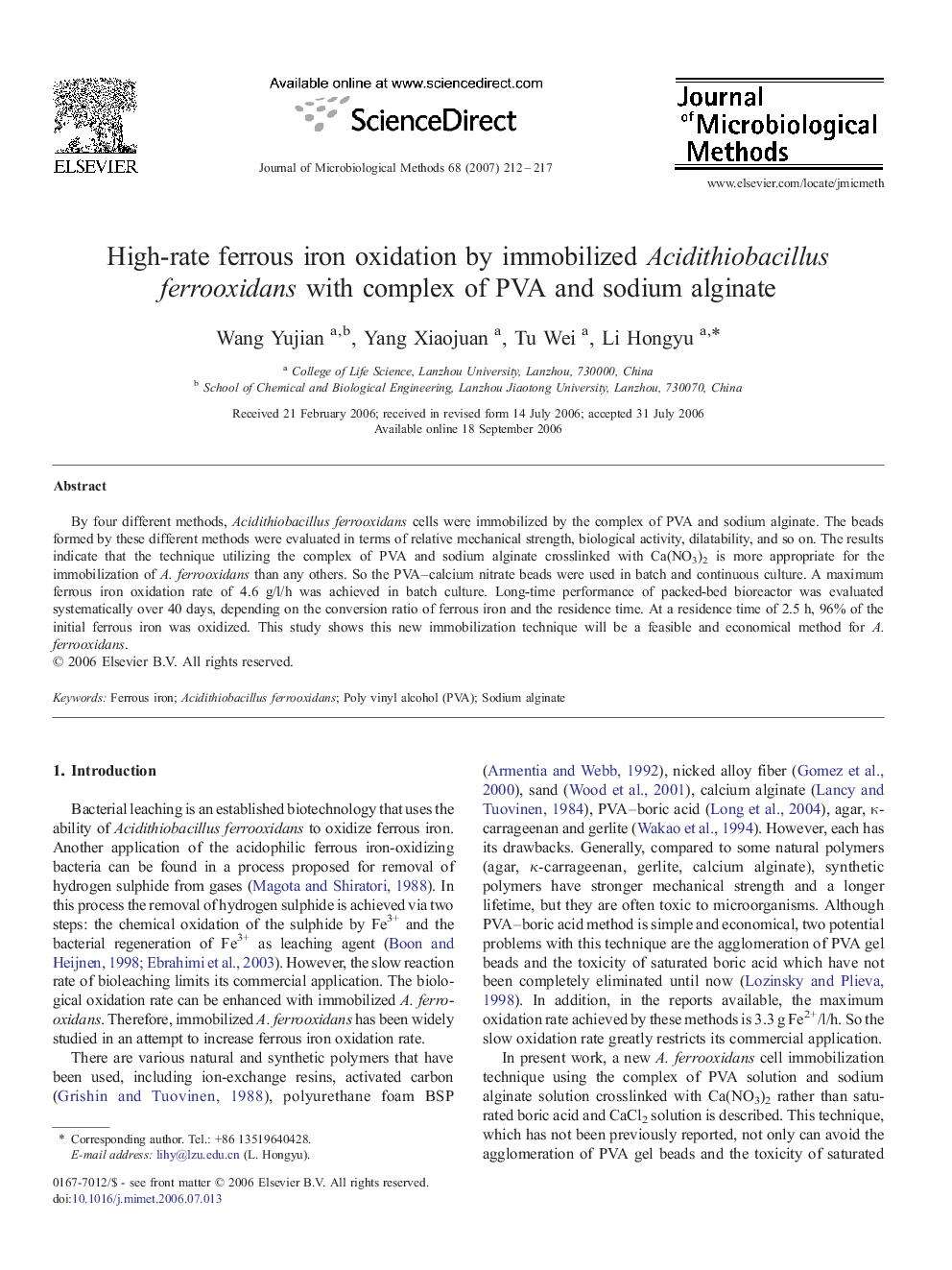| Article ID | Journal | Published Year | Pages | File Type |
|---|---|---|---|---|
| 2091306 | Journal of Microbiological Methods | 2007 | 6 Pages |
By four different methods, Acidithiobacillus ferrooxidans cells were immobilized by the complex of PVA and sodium alginate. The beads formed by these different methods were evaluated in terms of relative mechanical strength, biological activity, dilatability, and so on. The results indicate that the technique utilizing the complex of PVA and sodium alginate crosslinked with Ca(NO3)2 is more appropriate for the immobilization of A. ferrooxidans than any others. So the PVA–calcium nitrate beads were used in batch and continuous culture. A maximum ferrous iron oxidation rate of 4.6 g/l/h was achieved in batch culture. Long-time performance of packed-bed bioreactor was evaluated systematically over 40 days, depending on the conversion ratio of ferrous iron and the residence time. At a residence time of 2.5 h, 96% of the initial ferrous iron was oxidized. This study shows this new immobilization technique will be a feasible and economical method for A. ferrooxidans.
